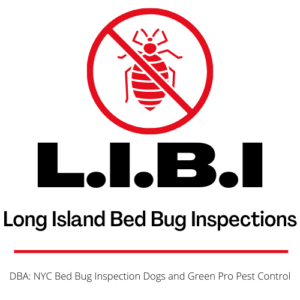Spring is struggling to push old man winter out of the way for the year. Soon it’ll be time to throw open the windows and give the house a good going over. A big part of the annual spring cleaning ritual is parting with some things that we’ve finally grown tired of. We donate them to thrift stores and jumble sales and haul them out to the driveway for weekend garage sales. It’s a great way to declutter making room for some new home furnishings.
But the second-hand furniture market does more than just cut the clutter. It makes it easier for people to pick up new-to-them couches, recliners and dining room sets while on a budget. Buying used furniture can be a great way to save money. But it can also be a sure-fire way to introduce bed bugs to your home.
Bed Bugs May be Hiding in your Second Hand Purchases
Whenever you shop for second-hand items there is always a chance you’ll find pests hiding in your purchases. Bed bugs in particular are highly adept at hiding in tightest spaces and the deepest recesses. So it pays to take some time to consider what you’re purchasing and examine it carefully before bringing it into your home.
So before you hit any weekend garage sales or jumble sales let’s look at our 6 simple rules to buying bed bug free used furniture.
1 – Shop Smart
Bed bugs can be difficult to spot on the fly. But they’re even more difficult to get rid of once you bring them home. The first rule of buying second hand is all about knowing what to avoid.
It’s not unusual to see home improvement gurus bragging about how they’ve made great decorating finds just driving around the neighborhood. It’s the ever popular story of finding fabulous couches and chairs out on someone’s front lawn with a “take me home I’m free” sign pinned to the upholstery.
Buying second-hand has enough potential pitfalls without bringing home abandoned pieces of furniture. If an item has been dumped on the sidewalk there’s probably a good reason. Saving money isn’t worth bringing an infestation into your home. Ignore roadside finds and keep driving.
2 – Try to Avoid Buying Upholstered Items
We all love a comfy chair. But upholstered arm-chairs and couches can be a real nightmare when it comes to bed bugs. Once inside they can be hard to detect and even steam cleaning won’t shift the pests. In fact, steam cleaning almost makes the problem worse. The heat of the steam isn’t substantial enough to completely kill all of the bed bugs and their eggs, but the process does make the piece look attractive to buyers.
When it comes to second-hand chairs and couches the best advice is to avoid them all together. However, if you feel lucky and want to try your hand take some precautions. Inspect the piece thoroughly before purchasing, and ask the seller about the item’s history. Where was it used? Where has it been stored? In the final analysis though, it’s a gamble.
3 – Buyer Beware (and Be Skeptical)
Most people selling second-hand furniture do so in good faith. But that doesn’t mean their items are free of bed bugs. As a buyer it’s up to you to check out any potential purchases before you hand over your hard earned cash.
Whether you’re shopping at a garage sale or buying from a thrift store the first thing to do is ask the seller about the history of the item you’re considering buying.
-
Where did it come from?
-
How many owners has it had?
-
Is it from a home with a history of bed bug infestations?
These are all fair questions and you have a right to straight answers.
If you’re buying from a thrift store or antique shop ask how and where the items have been stored. This is an important point. Some sellers may believe that long term storage will kill any stray pests. But bed bugs can live up to 18 months without a blood meal. Just because an item’s been stored in a warehouse for the better part of a year is no guarantee that it will be free from infestation. Be smart. Be curious. Be careful.
4 – Buy Non-Upholstered Simple Pieces
If you are committed to shopping second-hand for home décor items then you can, at least, minimize your risk. Concentrate on pieces with smooth surfaces. Think hard wood or solid plastic as opposed to items containing soft or porous materials such as leather or fabric.
Keep in mind bed bugs have been found hiding in a surprising variety of locations. They’ve been known to hide in books, lamps, clocks, and even electronics.
5 – Inspect All of Your Purchases
Finally, the most important rule of all. Before you take anything home you need to carefully inspect it for signs of bed bug activity. While bed bugs are small and elusive they are not invisible and a careful examination should reveal any tell-tale signs of bed bugs.
Look for staining from blood or fecal matter. Check the backs and undersides of the item for places bed bugs might hide. Look into joints, seams, crevices, and cracks. Bring along a flashlight and magnifying glass to aid in your inspection.
Remember – anything you bring into your home can have long-lasting repercussions. So shop wisely and take the time to review your purchases carefully.
Published by Scott Palatnik
If you believe you’ve brought bed bugs into your home or office, give us a call, we can help!
Now with 2 locations. On Long Island @ 516-619-6149, or in NYC @ 212-299-9186
We are Long Island Bedbug Inspections.
Your Bedbug Inspection, and Elimination solution.


